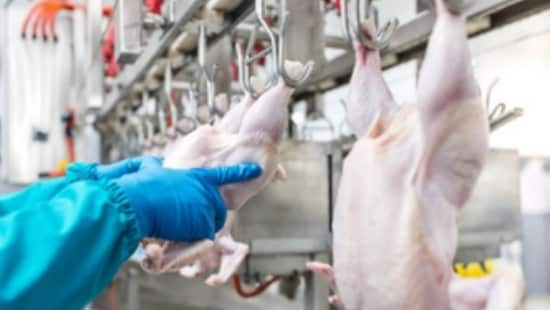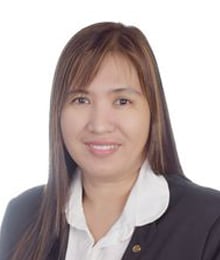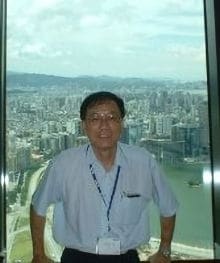Poultry Production is a Product Safety Business

Asia has the fastest-growing protein segment in the world. The region now leads the world in both production and consumption, producing 35 percent of global supplies and absorbing 61 percent. In Southeast Asia, Malaysians consume the most at 39 kilograms annually for each person, Singapore (36 kg) followed by Myanmar (29 kg), Vietnam (15.9 kg) and Philippines and Thailand (13.3 kg).
Some chickens that enter the slaughtering sheds may carry bacterial pathogens in their intestines. Salmonella, Campylobacter and Listeria monocytogenes are the bacterial pathogens that cause serious illness. The pathogens can enter processing plants on feathers, carcasses contaminated with feces, and soil, then remain on equipment as biofilm until removed through cleaning and sanitation. Contaminated meat can result in potentially deadly illness, product recalls, even factory closures.
Keeping Your Poultry Plant Safe
Supplying clean, healthy, vaccinated chickens to poultry plants and applying the appropriate hygiene protocols that remove biofilms of Salmonella, Listeria and spoilage bacteria from processing equipment are critical to the production of safe product.
Removing harmful biofilms involves applying an alkaline foam cleaner, a sanitizer and rinsing. The alkali removes the polysaccharide that pathogens secrete to protect themselves against fluctuations in temperature and moisture, and cleaning chemicals. After this, the biofilm residents are exposed to the lethal effects of the sanitizer (chlorine-based or peracid-based sanitizers). It’s important to note that applying sanitizers alone will not effectively remove the biofilm or kill the residents. Removal of the biofilm from its attachment to the surface of equipment is best achieved by rinsing with boosted pressure water (10-15 bars).
Foam cleaning programs may be optimized by reducing the 5-step program to a 3-step program by using powerful, new alkali cleaners with sanitizing properties (cleaner/sanitizer). Ecolab in Southeast Asia supplies a range of cleaner/sanitizers, for example Topax Duo. These innovative products do not contain QAC as the sanitizing agent.
The use of quats (Quaternary ammonium compounds) are restricted by the European Chemical Agency because of their toxic and harmful effect on aquatic life and humans. Europe established Regulation (EC) No 396/2005 that specifies the maximum quat residue of 0.1 mg per kg meat. This increases the risk of using quat containing products that could contaminate poultry meat. Non-quat containing products such as Topax Duo eliminates this risk.
Decontaminating Poultry Carcasses
Processed poultry carcasses must be decontaminated before they’re chilled for sale. This involves removing soil, pathogens, and spoilage bacteria to meet the strict standards of importing countries. The most widely used decontaminants in Southeast Asia include chlorine-based compounds and peracetic acid (PAA) programs.
Although chlorine-based compounds are still used, their effectiveness in spin chillers has recently been questioned. It has not reduced counts of microorganisms on carcass skin except in treatments with very high concentrations of 400 to 800 parts per million. This is because of the high organic matter in the spin chiller reduces the anti-microbial properties of chlorine.
Only about 10 percent of US-based plants continue to use chlorine. Most use PAA containing product like Ecolab’s innovative Inspexx 150.
Peracetic acid is the most used decontaminant in the US. PAA used in chiller baths reduces up to 91 and 43 percent of Salmonella and Campylobacter pathogens respectively, with concentrations as low as 85 ppm, after immersing carcases up to 60-minutes. The USDA permits a maximum of 2,000 ppm PAA for whole or cut poultry (including carcasses, parts, trim, and organ) and 495 ppm for processed and preformed Ready to Eat (RTE) poultry.
Food Safety and Resiliency in Poultry Production
Poultry that is safe for consumption can be produced if healthy chickens that are free of pathogens, are delivered to the plant for slaughter, and processing equipment are frequently cleaned and sanitized with appropriate foaming chemicals and procedure.
Food Safety is a priority even during these difficult COVID times that has limited mobility. In Southeast Asia, the protein industry has accepted the challenge by conducting hygiene and sanitation training. This approach has enhanced employees’ awareness of plant hygiene and cleaning standards that will continue to protect the plant 24/7.
Visit this link to know more about Ecolab’s Expertise in Poultry Cleaning and Sanitation
About the Authors
Albert S. Lee – Senior Technical Manager, SEA
Florife R. Yasa – Innovation Deployment Manager, SEA




